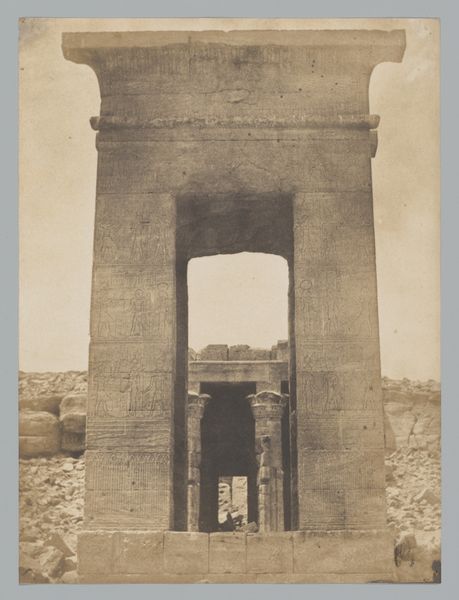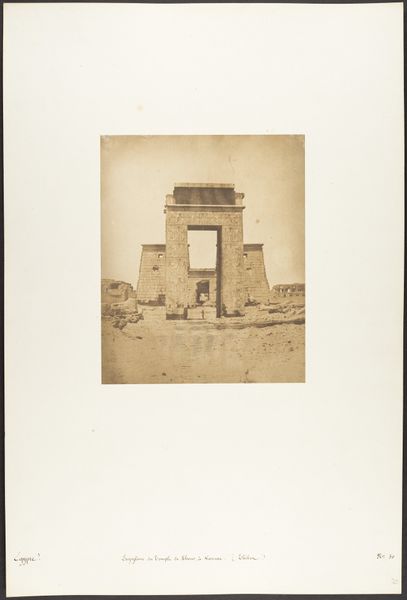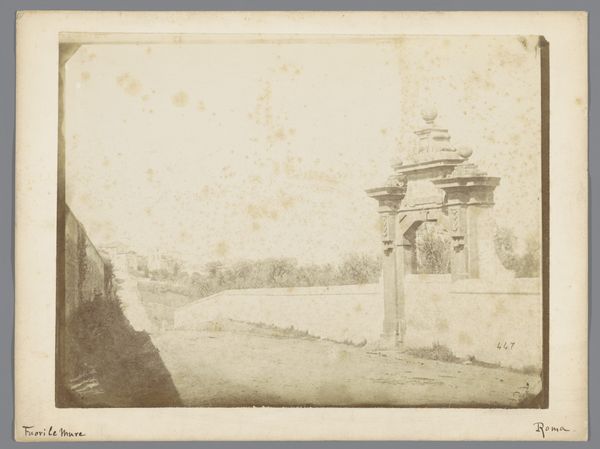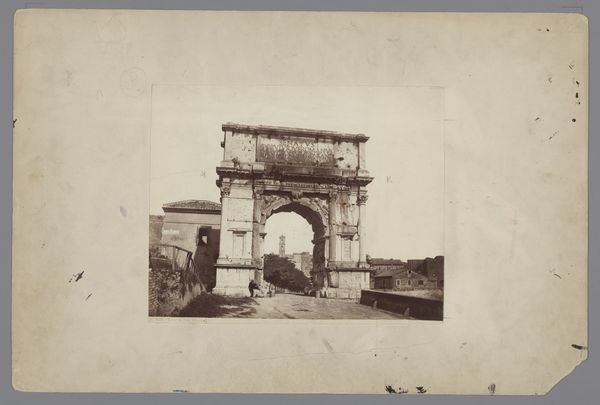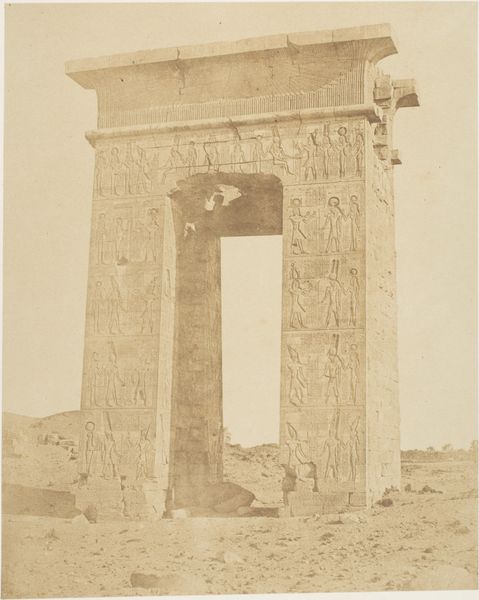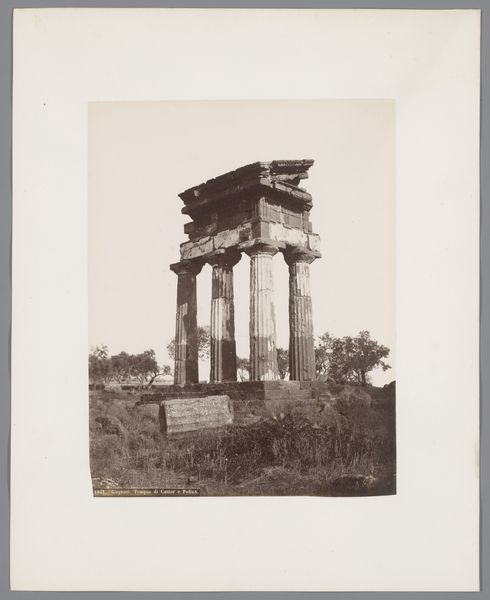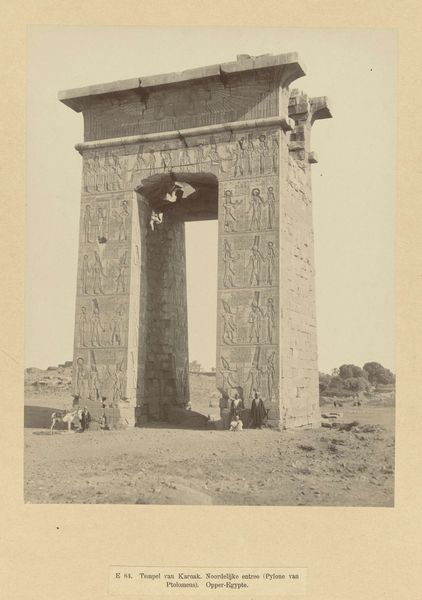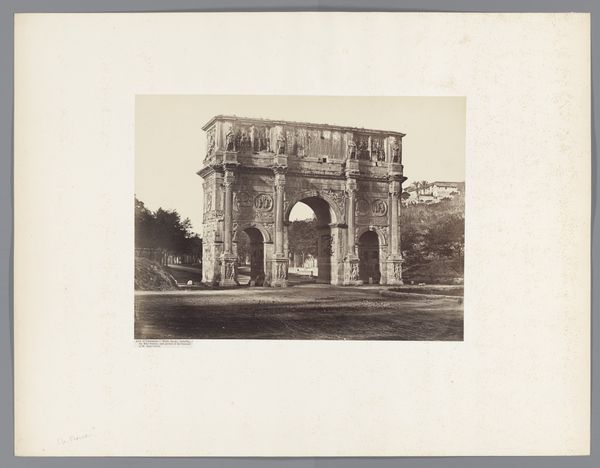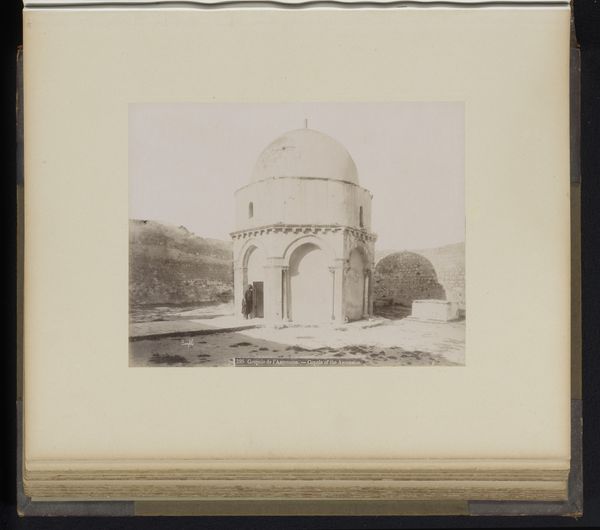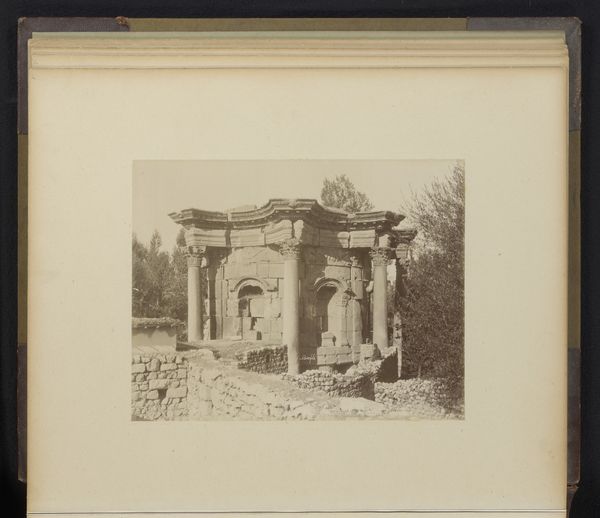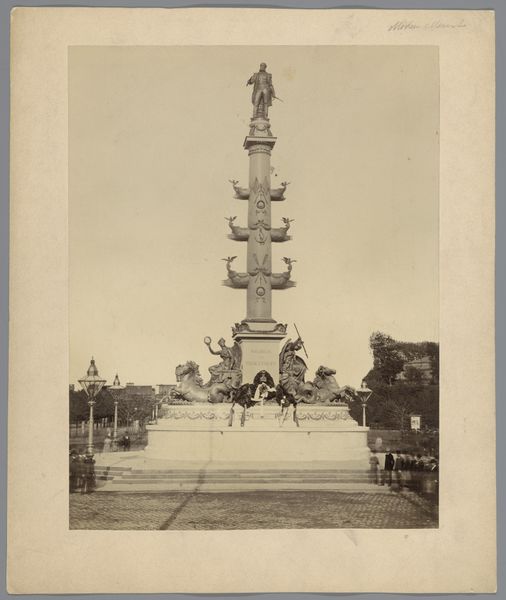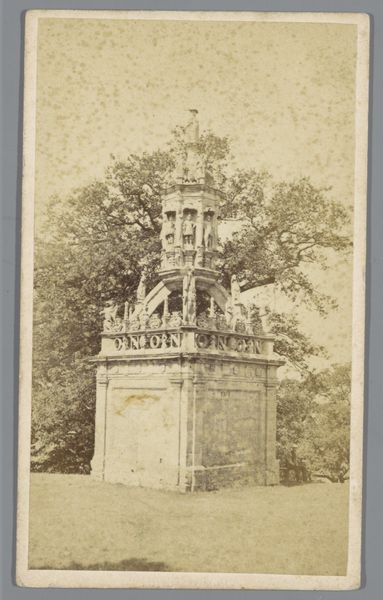
photography
#
photo of handprinted image
#
aged paper
#
toned paper
#
muted colour palette
#
landscape
#
white palette
#
ancient-egyptian-art
#
photography
#
ancient-mediterranean
Dimensions: height 357 mm, width 270 mm
Copyright: Rijks Museum: Open Domain
Curator: Maison Bonfils created this photograph, titled "Versierde boog bij de tempel van Ramses IV te Karnak", sometime between 1850 and 1900. The scene holds a certain solemn grandeur, don’t you think? Editor: Absolutely. I am immediately struck by the scale conveyed despite the sepia tones; the arch looms. The rough-hewn stone and hand-printed texture emphasize a human connection to its production. It speaks of laborious extraction and carving. Curator: Look closer at the reliefs; the repetitive figures are clearly pharaonic, each embodying power and divine authority. I notice that the symbolism evokes permanence; the continuous repetition acts as an invocation, binding the kingdom together. Editor: Agreed, but consider the conditions of its making. Transporting massive stones, the specialized labor involved—photography abstracts this context, yet its physical presence as a print carries that echo, right? Curator: Photography, particularly then, immortalized and disseminated ancient wonders for a growing audience. Each photograph then becomes an icon, almost, a small fragment containing something vast. Don't the sun-faded colors remind you of the past itself? Editor: They do. And even that fading itself speaks to the materiality. The chemicals, the paper quality, even the climate in which this object was stored contribute to its meaning as a material artifact and commercial item for global consumption. Curator: But think also about the intended viewer, not merely the consumer of photographs, but the figures in the reliefs themselves; they once represented a world where gods, pharaohs, and the land were one. Editor: Yes, although it is hard to disentangle that view from how the colonizers and wealthy tourists interacted with these places—purchasing photographs such as this one to preserve and possess. That too shapes meaning. Curator: So, while it acts as a window, it can't help but change what it frames. I will certainly not think of photography as an innocent art again. Editor: Agreed; our perspective is irrevocably colored by understanding its production and the networks in which it moved and continues to exist.
Comments
No comments
Be the first to comment and join the conversation on the ultimate creative platform.
